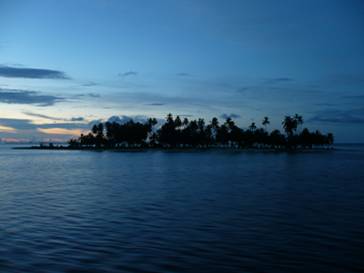Friday, 7 September 2007
Today we will cross the border to Colombia.
However,
Those occupations are certainly most lucrative. As the
production of Colombian cocaine solely provides approximately 80% of the world
market the annual incomes of this illegal business are etimated to be around 4
billion Euros!
The people of
Crossing the border runs fast and smoothly. The soldiers are so amazed by us and our
motorbikes that they don’t let us pass without a picture of all being taken.
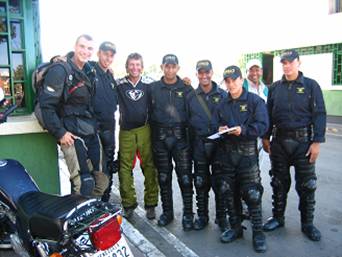
We spend the evening in the small city of
Very much to the amusement of the guests, who get up
and cordially welcome us!
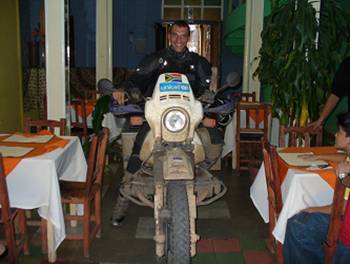
Saturday, 8 September 2007
As we ride over the highways of the country we soon
experience our first surprise. Contrary to
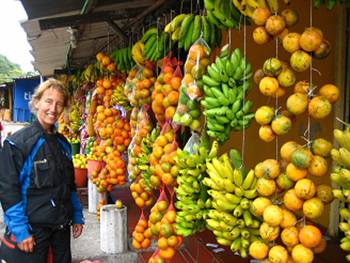
Certainly
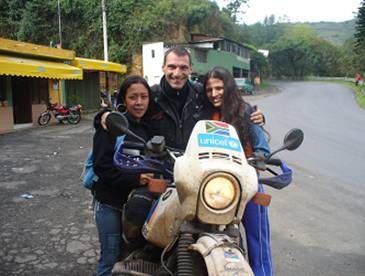
Even the infamous road blocks turn out to be good fun.
When the policemen stop us they can’t wait to hear our story and wish us a good
journey. Many foreigners do not come to
In the evening we arrive in San Gil. The small town
lies in the mountains and we find a nice
little lodge.
We park the bike in the patio just in front of our
rooms and enjoy the evening.
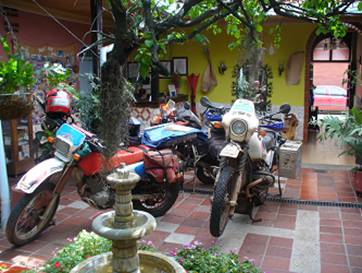
Sunday, 9 September -
We spend the days relaxing and looking around the
city. The trees are hung with some silver looking beard like curtains, so
called „Barbas de Viejo “.
This form of vegetation houses innumerable insects and
micro organisms and represents a unique ecological system.
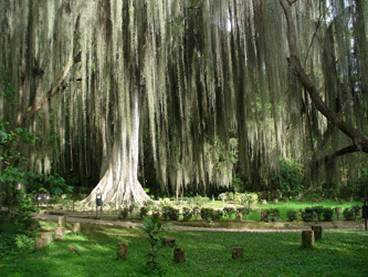
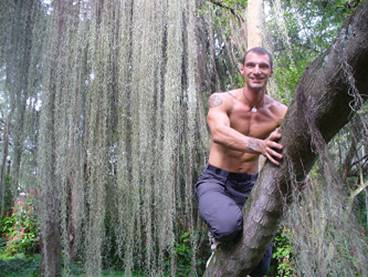
Tuesday, 11 September 2007
As we start the bikes in the morning, there suddenly
is smoke allover Chris motorbike.
Seconds later his whole wiring harness is burned down.
Apparently, a loose contact at the headlight touched
metal and caused the problem.
Since my „baptism of fire “in
The only option we have, is to push the bike back into
the lodge and begin with the laborious repair. One cable after the other is cut
out and replaced by a new one.
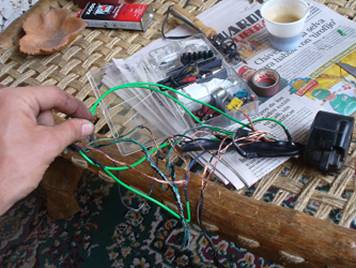
10 hours later, we have finally sorted out all of the
problems and wired up the whole thing again. Unfortunately the starting relay
could not be saved any more. We decide to simply short circuit the starter.
Chris has now got two cables coming out under his seat and when he wants to
fire up the engine, all he has to do is briefly connect them. What on one hand, is ideal when you are either
likely to loose your key or want to make a fast move, one the other hand means,
that from now on the bike must never be left unattended.
Wednesday, 12 September 2007 - Thursday, 13 September 2007
This morning Chris bike works fine. We drive over
beautiful mountain roads and in the
afternoon we reach the town ‘Vila de Leiva’.
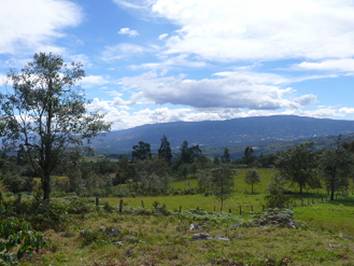
The former colonial town was founded in 1572 and now
has the most preserved historical center in the country.
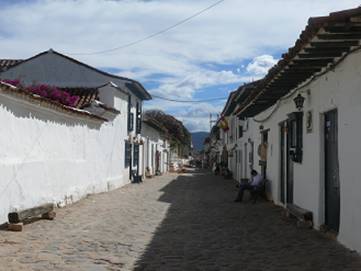
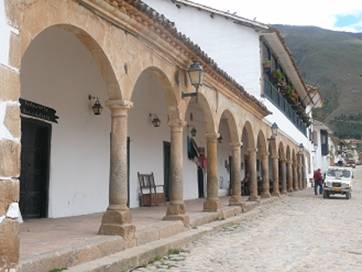
Friday, 14 September 2007
On our way to
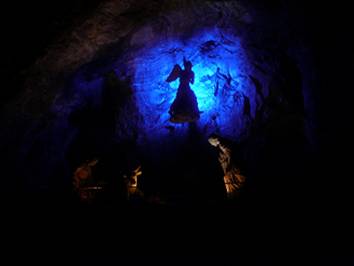
The cathedral is an impressive work of art and a place
of unique atmosphere.
A monument reminds of the workers who lost their lives
during the years of construction.
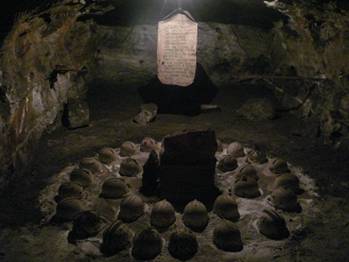
All kinds of spirits and angels are driffting from
shadows to spotlights and give the place a mystic touch.
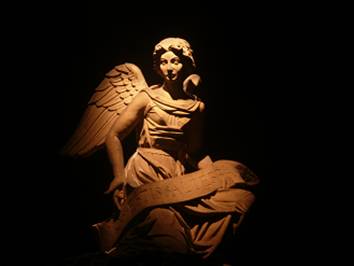
Saturday, 15 September 2007
Today we reach the capital of Colombia. The city of
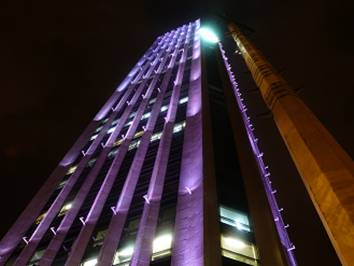
After
Sunday, 16 September 2007
To the east, the city is limited by the Cerro de
Monserrate. The mountain offers a spectacular view over the enormous metropolis
of 8 million people.
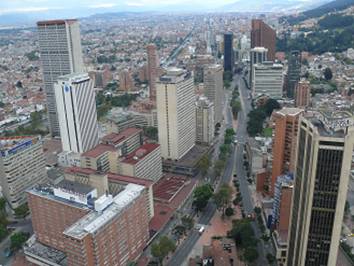
On a Sunday you are naturally not the only one on the
mountain. Thousands of people walk up the steep path to the church and want to
see the statue of the Senor Caido (fallen Christ). Rumor has it, that this
statue is connected to many miracles.
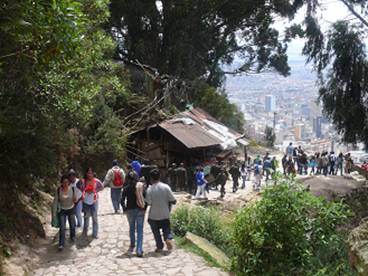
Monday, 17 September 2007
While I go for a run, Chris almost becomes the victim
of a robbery. As he takes out his camera to take a picture, suddenly a man
pushes him down and tries to grab his camera.
Fortunately Chris is faster and manages to hold on to
the camera and kick the robber with his boots.
Certainly,
Tuesday, 18 September 2007
After the rather moderate experiences with
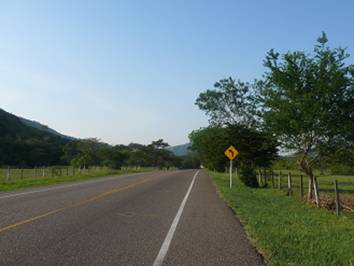
Wednesday, 19 September 2007
The narrow gravel path leads through tropical valleys
and across breath taking mountain ranges. However, things are not that peaceful
around here...
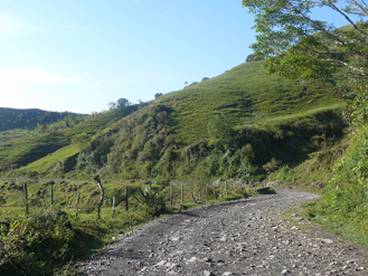
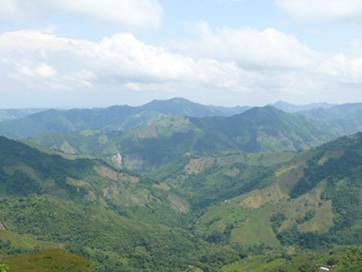
After some more specific observation of the
mountain-slopes, small plantations and farm houses become visible. Several
times a day, military helicopters patrol the mountain ranges and control what
the farmers cultivate and harvest. Because of the isolation and poverty of many
farmers within the alpine regions, their temptation is huge to grow a more profitable agricultural
product. The Coca plant.
The government annually invests hundreds of millions
into its fight against the Guerillas and drug smugglers. Nevertheless, in the
mountains only a relatively small part of the poisonous harvest can be located
and destroyed. The dense fogs wrap the valleys into grey veils and movements on
the ground are almost impossible to be detected.
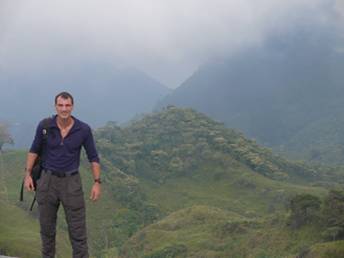
We spend the evening in Florencia, a small mountain
village. Due to the constant threat of the Guerillas, the military patrols the
roads in combat formations and
strategically important points are fortified with heavy machine guns and
armoured vehicles.
As we park the motorcycles at the main square, we are
immediately interviewed by the commander and asked about our travel plans. He
also urgently recommends us to spend the night in the village. Well, nothing
else we intended to do!
For the people life is anything other than easy
between the lines of the armed conflict. Nobody exactly knows who really stands
on which side. Too enticing it is for many to jump on the train with the
illegal million dollar business and the rebels specialized in drug trade are
never becoming tired to recrute new helpers from the mountain population.
Thursday, 20 September 2007
We leave the village in the clouds of the morning mist
and say good-bye to the friendly people. Many of the villagers are already up
and on the road to wave us goodbye.
Though some look a little surprised as we head off
into the other direction as we told them the night before. Sometimes it is
better to do it that way because you really never know!
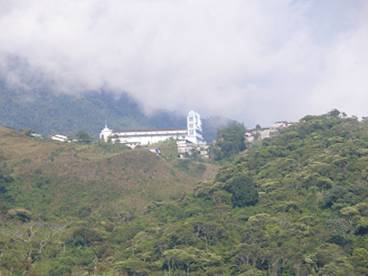
The rustical dirt road leads us down the mountain
again and in the evening we reach
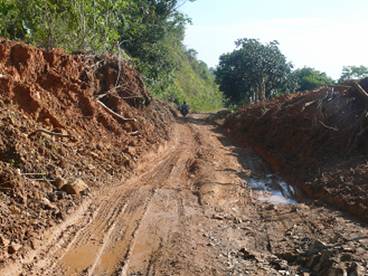
At the beginning of the 20th Century the coffee trade
brought the first large upswing to the city. With the beginning of the 80's the
city of
Thereupon, a special unit of 1500 men was formed and
it took them nearly two years to hunt the cartel boss down. In 1993 Escobar was
shot in
He had always been conscious about the importance of
the public opinion and being the public man he was, more likely than not his
status made him invest large sums into non profit projects and infrastructure
programs.
After his death the problems with the drug trade did
not disappear.
Despite sharpest interventions of the government, the
Guerillas and Para Militaries took over the drug market and with the
decentralization of criminal power the situation for the population rather
became worse.
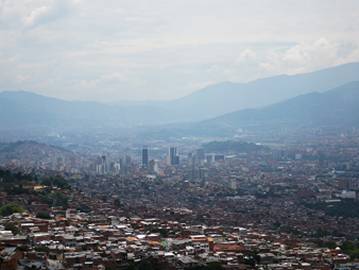
Today
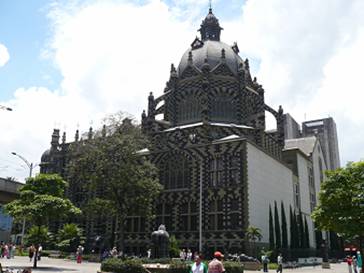
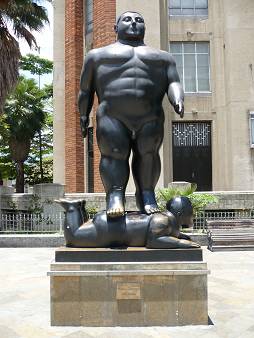
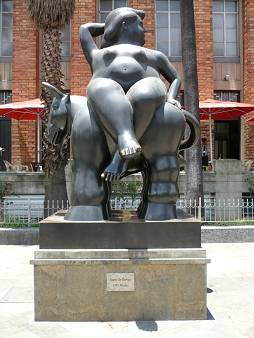
Monday, 24 September 2007
Today we continue our journey again. Before we
reach the coastal lowlands of the north we must cross the mountains for a last
time. The winding road leads by green palmtrees and the mild temperatures at
2500 meters make riding a pleasure.
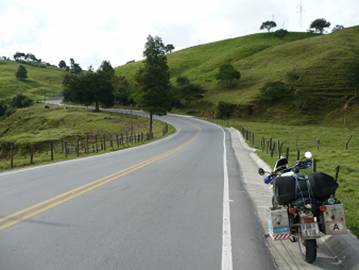
Tuesday, 25 September 2007
This is as good as riding a motorbike does get! The
roads are superb and the curves endlessly swing from the left to the right.
Viva
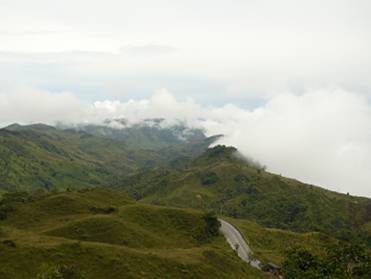
Wednesday, 26 September 2007
Today we arrive at the coast and reach the city of
The city was founded in 1533 and quickly became
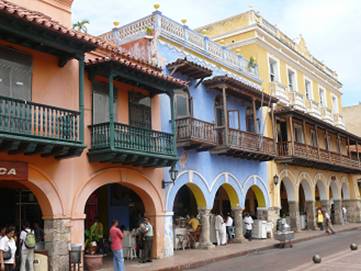
An enormous town wall surrounds the historical part of
town and was originally designed to repel the numerous pirate attacks.
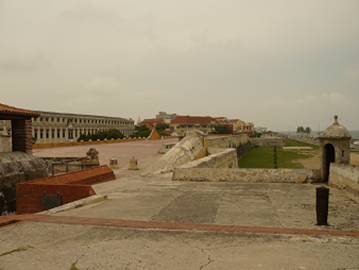
The two most arduos of these ambushes took place in
1586 led by Sir Francis Drake and in 1741 by Edward Vernon.
The old part of town still consists of well preserved Spanish architecture of the 16th and 17th century and is a place of great atmosphere
with its narrow streets and animated places.
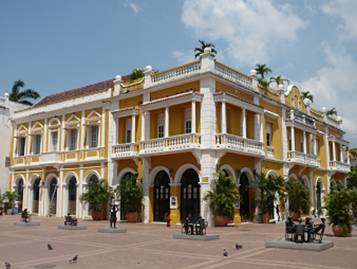
The best place to spend the evening is without a dout
Cartagena’s Cafe del Mar. This vibrant club is located on the top of the old
town wall and boasts with stunning views over the Carribeean sea, especially in
moonlit nights!
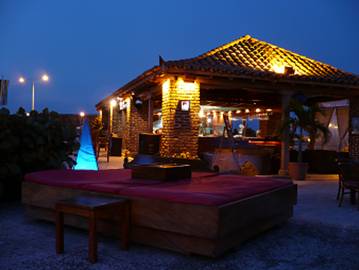
I bid farewell to South America ......
Von Cartagena geht es weiter mit dem Schiff nach
Zentral Amerika.As there is no road connection betweenEs
ist praktisch unmöglich mit dem Motorrad auf dem Landweg von Kolumbien nach
Panama zu fahren. Colombia and Panama, we will leave Cartagena by ship. Hierzu müsste man die Darien Sümpfe durchqueren und
dieses Gebiet wird zur Gänze von Guerillas kontrolliert die den Drogenschmuggel
nach Nord Amerika organisieren.
Though
there does exists a landbridge between the two countries, the area is a swamp
and virtually impassable. Further more, the infamous Darien Gap is controlled
by guerrillas and paramilitaries who use its secluded waterways to smugel
Colombian cocaine to North American markets.
In
regards of the situation, a Wir nehmen also lieber
ein Segelschiff.sailing boat is the safer option and as a bonus, we will
enjoy a nice cruise across the Caribbean sea.
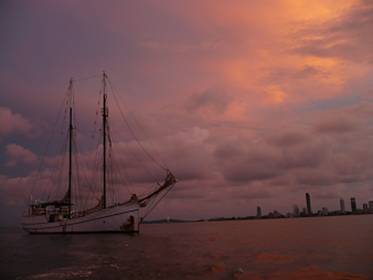
Durch etwas Glück treffen wir auf Ludwig und seine
„Stahlratte“.With a bit of luck we meet Ludwig and his "steel rat". Ludwig ist ein deutscher Kapitän und mit seinem
Zweimaster über die San Blas Inseln unterwegs nach Panama. Ludwig is a
German captain, sailing a two master via San Blas Islands to Panama.
Sein Boot ist fast 40 Meter lang und so ist es kein
Problem uns mitsamt der Maschinen mitzunehmen.His boat is almost 40 meters long
and it is not a problem that we bring the motorcycles.
Donnerstag, 4. Thursday, 4 Oktober 2007 October 2007
Heute machen wir uns daran die Motorräder zu verladen.Dadurch,
dass die Stahlratte so groß ist können wir die Bikes nicht direkt vom Steg an
Bord bringen, sondern müssen sie zuerst in ein Beiboot verladen.As the steel rat is a big
boat, we can not directly load the bikes on board from the pier.
First
we put them into a wobbling dinghy.....
Den Hinterreifen voran geht es ins Schlauchboot...
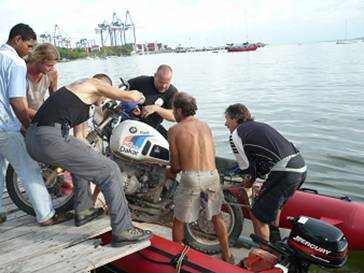
Und schließlich mittels Flaschenzug an Bord! And finally they get
winched onboard
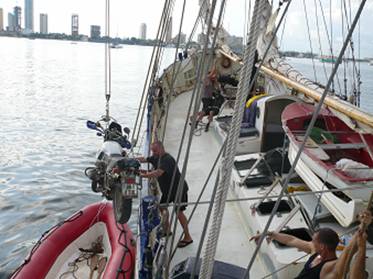
Gegen Abend sind die Maschinen sicher am Schiff
vertaut und wir verabschieden uns von der Skyline von Cartagena.In the evening the bike are
safely tied onto the deck and we say goodby to Cartagena, descending in a
beautiful sunset.
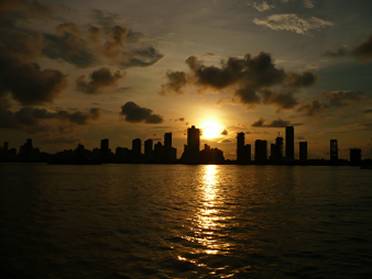
Freitag, 5. Friday, 5 Oktober 2007 October 2007
Als wir heute die Kolumbianischen Gewässer verlassen
wollen stoppt uns die Küstenwache.As we are about to leave Colombian waters, we are
stopped by the Coast Guard. Die Männer kommen an
Bord und durchsuchen 4 Stunden lang das gesamte Schiff.
The
men come on board and search through the entire ship for 4 hours. Zusätzlich nehmen sie von Crew und Passagieren die
Fingerabdrücke und überprüfen die Papiere für unsere Motorräder. In
addition, they take the crew’s and passenger’s fingerprints and check the
papers of our motorcycles. As we have properly stamped out the motorbikes at
the customs office we have no problem at all. Dadurch, dass wir
die Maschinen vorschriftsmäßig beim Zoll ausgeführt haben gibt es keine
Probleme.
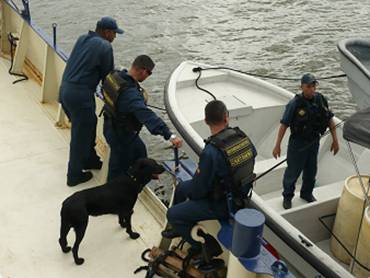
Mit solchen Stops ist zwischen Panama und Kolumbien
immer zu rechen.Such controls are pretty normal between Panama and Colombia. Wir befinden uns auf einer stark frequentierten
Schmuggelroute und sehr viele der Boote transportieren heiße Fracht. We
are on a busy smuggling route and a lot of ships are transporting hot stuff.
Nach beendeter Untersuchung entschuldigt sich der
Kommandant für die Unannehmlichkeiten und bittet uns ein Protokoll zu
unterschreiben, welches besagt, dass die Kontrollen korrekt durchgeführt
wurden.After
having completed the search, the commander apologises for the inconvenience and
wishes us a good journey. Whereupon we head onto the open sea.
Selbstverständlich
machen wir ihm gerne diese Freude und nehmen endlich Kurs aufs offene Meer.
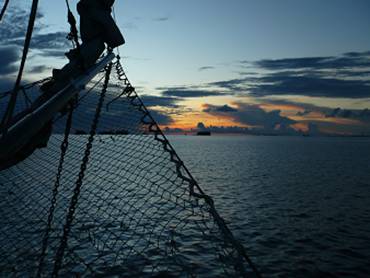
Die See ist ruhig und in der
Dämmerung erscheinen die San Blas Inseln am Horizont.The sea
is calm and as dusk creeps in the San Blas islands appear on the horizon. Wir werfen Anker und verbringen unsere erste Nacht in
Panama, unter Millionen von leuchtenden Sternen. We find a good spot to
anchor and spend our first night in Panama, under millions of shining stars.
